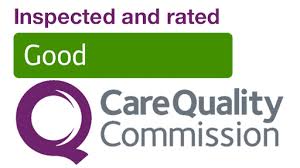Detailed Growth Ultrasound Scan Detailed Well-being Baby Scan – At...
Read MoreGender ultrasound scan
Baby Gender Scan – At a Glance
- 16 – 34 weeks Gestation age
- Determine foetal sex – Boy or a Girl?
- General foetal well-being
- Placental position
- Normal levels of amniotic fluid
- Assess foetal growth via a series of measurements
- No GP referral is required
- Same time results to take away
- Fully qualified NHS sonographers
- Full Bladder is required
- Only £139
- Book Online or over the phone
Genuine 5 Star Google Reviews:
Gender ultrasound scan: 16 to 34 weeks of pregnancy
Obstetric ultrasound is widely used for diagnostic purpose during pregnancy. One of the uses that receives more attention however, is the ability to determine the sex of the baby.
After the early scan around 85% of the expectant parents to be, can’t wait to find if they are having a boy or a girl for obvious reasons: curiosity, to know how to paint the nursery or pick a name. Sometimes determination of the sex could be due to medical reasons, for example in cases of sex-specific disease such as congenital adrenal hyperplasia, which is a genetic condition.
Our gender scan will reveal the sex of your baby from only 16 weeks onwards. Gender or sexing ultrasound scans are not routinely offered by the NHS and depending on the policy of your maternity hospital.
Be aware, though, that it’s not always possible for the sonographer to be 100% certain about your unborn baby’s sex. For example, if your baby is lying in an awkward position or if the ultrasound image quality is compromised due to maternal increased BMI, it may be difficult or impossible to tell.
How many weeks are you?
If you are not sure, please use our Gestation age pregnancy calculator to find the age of your pregnancy before you book your scan.
Book your Gender Scan Online
Use our online booking system to choose the most suitable day and time.Only £139
(£39 deposit is required)What is the purpose of this scan:
The purpose of this scan is to:
- Determine foetal sex – Boy or a Girl?
- General foetal well-being
- Placental position
- Normal levels of amniotic fluid
- Assess foetal growth via a series of measurements
What is included with this gender scan?
This private ultrasound includes: Ultrasound report with a 2D b/w picture
Preparation for this Scan
We need full bladder for this scan so you need to drink 1/2lt (1 pint) of water an hour before your ultrasound.
What should I expect during the ultrasound test?
Before the private ultrasound scan, our sonographer will explain the examination procedure.
This early baby scan is normally performed trans-abdominally. In some instances, however an internal or vaginal ultrasound may be required to see all the necessary detail or if your womb tilts backward.
We will always try to scan trans-abdominally first but if we need to do an trans-vaginal scan then we will discuss this with you.
To perform this private scan, you will be asked to lie down on the examination couch and expose your lower abdomen.
A small amount of water-based gel will be applied to your skin. The gel will help the transducer to make good contact with the skin. The ultrasound transducer will be placed on the body and will be moved in different directions over the area of interest to obtain the required information/ultrasound images.
There is usually no discomfort from pressure as the transducer or probe as otherwise known, is pressed against the area being examined. However, if scanning is performed over an area of tenderness, you may feel pressure or minor discomfort from the transducer.
Once the high frequency ultrasound scanning is completed, the clear ultrasound gel will be wiped off your skin. Any portions that are not wiped off will dry quickly. The ultrasound gel does not usually stain or discolor clothing.
This ultrasound examination is usually completed within 20-30 minutes. After an ultrasound examination, you should be able to resume your normal activities immediately.
We offer a large range of baby scans to complement your NHS ones, in our London clinic:
- early pregnancy scan
- dating scan
- growth scan
- gender scan
We also offer a range of private ultrasound examinations for men and women.
References:
NHS- Ultrasound Scans in Pregnancy
NHS – 12-week scan
ROOG – Guidance for antenatal screening and ultrasound in pregnancy in the evolving coronavirus pandemic
NICE – Antenatal care for uncomplicated pregnancies
BMUS – Guidelines for the safe use of diagnostic ultrasound equipment
Ultrasound in Obstetrics and Gynaecology – ISUOG Practice Guidelines: performance of first‐trimester fetal ultrasound scan
Healthline – Pregnancy Ultrasound
WHO – WHO recommendation on early ultrasound in pregnancy
Other Pregnancy Scans we offer
Frequent Questions
The early pregnancy baby scan is used to see how far along in your pregnancy you are and check your baby’s development. This sonography test can routinely detect a baby’s heartbeat from as early as 6-7 weeks and confirm the correct dates of your pregnancy.
You can see the baby on the screen from 6 weeks – At this stage the pregnancy is of course small, but we should be able to see the gestation sac with a yolk sac developing in your uterus. We should also be able to see your baby’s heartbeat on scan, which is very reassuring.
At 5 weeks pregnant you will be able to see a small gestation sac in the uterus.
At 6 weeks pregnant within the uterus you will be able to see a small gestation sac and maybe a small yolk sac.
Between 6-7 weeks a fetal pole might be seen. Foetal pole is the start of seeing a baby but still measuring only a few millimeters with a heartbeat and the chances of pregnancy continuing are high, close to 80%.
At 7 weeks gestation, the baby usually measures 10 – 20 mm and the heartbeat can be seen.
At 8 weeks pregnant, the baby measures between 20 and 30 mm and the heartbeat is clearly visible. The chances of the pregnancy continuing in that stage is 98%
At 10 weeks pregnant the baby is now between 35 and 40mm and if the baby heartbeat can be seen the chances of the pregnancy continuing is 99.4%. At 11+ weeks pregnant the baby is now measuring around 45mm and the head, body, arms and legs can be seen. The heart, the stomach, bladder and cord insertion can be seen.
The foetal pole is the first direct imaging manifestation of the foetus and is seen as a thickening on the margin of the yolk sac during early pregnancy. It is often used synonymously with the term “embryo”.
Foetal pole or yolk sack can be seen from 6-7 weeks of gestation. In those cases where the yolf sac is not seen a follow up scan will be recommended 7-10 days later.
Our diagnostic ultrasound machine is new and utilises the latest breakthrough high frequency ultrasound technologies to increase diagnostic accurancy and diagnostic confidence. Utilising up to date technology helps us to keep ultrasound expose to the foetus and mums as low as reasonably possible.












